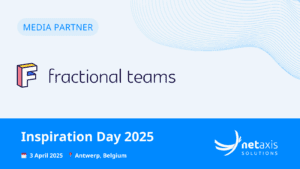The Netaxis Solution for Number Portability Automation
Number Porting automation is one of our specialisms at Netaxis Solutions. Our API Orchestrator (APIO) modules enable a number of use cases. The best known (see numerous APIO blogs) is the role APIO has in mediating Cisco BroadWorks provisioning in the Telco IT landscape and the portals it offers to both the operator and the B2B customer to manage the service.
Orchestration and portals are also key ingredients in our approach to number portability automation. Number porting was important in the early days of the liberalization of the telecom market and is still a hot topic today. Customers want to keep their telephone number when switching operators. Operators need a transparent number portability process and to automate the different steps as much as possible.
Netaxis’ blueprint to number portability automation is achieved via the integration of the APIO to automate the administrative part of the process and the SRE for the real time call processing.
Process Automation
Number portability is not enforced in all countries. In (most of) the countries where a regulatory enforcement exists, a central number portability authority is established. This authority defines and executes the actual number portability process ensuring that the porting requests and the broadcasting of the updates are done according to the functional specifications they publish. Number Portability automation is not obligatory but it does make huge sense from a cost and timescale perspective.
All licensed operators are connected to this central authority. ‘Port-in’ requests are initiated by the recipient via this authority to the donor. The donor handles the ‘port-out’ requests. Once the porting is complete, the other licensed operators are informed about the porting so that they can update their own local NP database to route the calls to the correct network.
 Figure 1 – simplified view of a generic Number Porting process
Figure 1 – simplified view of a generic Number Porting process
In most of the cases, the central authority offers a simple GUI to the licensed operators to perform the porting actions. This is not sufficient for a reasonably sized operator keen a better number portability management and an integration of the process in the IT landscape. This is where APIO comes in, see next picture.
In short, when a customer wants to retain his telephone number when switching operators, the recipient triggers via its CRM a porting request towards the APIO. The APIO then orchestrates the request towards the central authority to execute the actual action. After the donor answers positively to the request – again via the central authority – the APIO updates the surrounding systems. APIO typically updates:
- a local real-time call processing database, which is triggered when performing interconnect routing. In the Netaxis blueprint, the national NP database is hosted in the SRE which offers ENUM and INAP interfaces. The SRE offers advanced routing functionality on top (see later)
- a class 5 switching system to assign e.g. the telephone number to a certain enterprise
- the billing system, if needed
 Figure 2 – high level architecture of an automated Number Porting process
Figure 2 – high level architecture of an automated Number Porting process
In case of a port-out, the numbers are removed from the network. At many operators the porting out process is not fully automated. The APIO can assist this by orchestrating manual tasks to perform the correct commercial cancellations. APIO is also responsible for receiving broadcasts from the central authority and adapts the local database call processing accordingly. This is not shown in the figure above.
The APIO is built around a workflow manager designed for long running, asynchronous workflows. Process timers vary from a couple of minutes up to 3 months. It supports various protocols towards the surrounding elements such as SOAP/XLM over HTTP/S (typically to connect to the central authority), JSON/REST over HTTP/S, ODBC, webhooks and SNMP.
In the case the operator decides to automate only part of the process, the solution comes with a powerful GUI facilitating management of the full process from the portal.
This article was written by Netaxis CTO Geert Dobbelaere. If you want to know more please do feel free to get in touch using our contact form.





